The war of the currents was fairly decisively won by AC. After all, whether you’ve got 110 V or 230 V coming out of your wall sockets, 50 Hz or 60 Hz, the whole world agrees that the frequency of oscillation should be strictly greater than zero. Technically, AC won out because of three intertwined facts. It was more economical to have a few big power plants rather than hundreds of thousands of tiny ones. This meant that power had to be transmitted over relatively long distances, which calls for higher voltages. And at the time, the AC transformer was the only way viable to step up and down voltages.
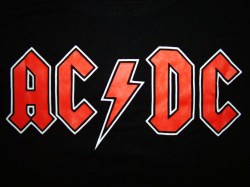
But that was then. We’re right now on the cusp of a power-generation revolution, at least if you believe the solar energy aficionados. And this means two things: local power that’s originally generated as DC. And that completely undoes two of the three factors in AC’s favor. (And efficient DC-DC converters kill the transformer.) No, we don’t think that there’s going to be a switch overnight, but we wouldn’t be surprised if it became more and more common to have two home electrical systems — one remote high-voltage AC provided by the utilities, and one locally generated low-voltage DC.
Why? Because most devices these days use low-voltage DC, with the notable exception of some big appliances. Batteries store DC. If more and more homes have some local DC generation capability, it stops making sense to convert the local DC to AC just to plug in a wall wart and convert it back to DC again. Hackaday’s [Jenny List] sidestepped a lot of this setup and went straight for the punchline in her article “Where’s my low-voltage DC wall socket?” and proposed a few solutions for the physical interconnects. But we’d like to back it up for a minute. When the low-voltage DC revolution comes, what voltage is it going to be?
Resistive Heating
The problem with lower-voltage wiring is simple physics. For a given power demand, P=I*V, so a lower voltage means pushing more current. But substituting in Ohm’s Law, more current also means dramatically higher resistive losses P=I^2*R in the wires. Reducing the resistance of the wire by using more copper is one alternative, but you get more bang for the buck by focusing on the current-squared term.
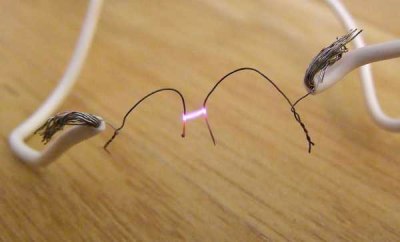 That’s the reason that, for instance, power over Ethernet (PoE) schemes use around 48 V to transmit something like 30 W of power — those thin Ethernet cables can only carry so much current without wasting most of it away as heat. Even around 50 V, PoE schemes count on a loss of three to five watts in the cabling. So whatever cabling is used for the low-voltage DC segments of your home’s electrical system, it’s going to be thicker than Cat-5.
That’s the reason that, for instance, power over Ethernet (PoE) schemes use around 48 V to transmit something like 30 W of power — those thin Ethernet cables can only carry so much current without wasting most of it away as heat. Even around 50 V, PoE schemes count on a loss of three to five watts in the cabling. So whatever cabling is used for the low-voltage DC segments of your home’s electrical system, it’s going to be thicker than Cat-5.
But copper costs money, so there’s always going to be some upward pressure on the voltage exerted by resistive heating effects.
Safety
 Electricity starts getting dangerous to humans somewhere around 30-50 V. That’s where the current levels that push through the human body resistance start to become troublesome. But while everyone says “safety first!” it’s also worth noting that you’ve got 110 or 230 V AC in your walls right now. Clearly it’s “washing machine first” in the real world. Which is to say that although sub-30 V DC would be safer, we suspect that the safety will be designed into the connectors, or into circuit breakers.
Electricity starts getting dangerous to humans somewhere around 30-50 V. That’s where the current levels that push through the human body resistance start to become troublesome. But while everyone says “safety first!” it’s also worth noting that you’ve got 110 or 230 V AC in your walls right now. Clearly it’s “washing machine first” in the real world. Which is to say that although sub-30 V DC would be safer, we suspect that the safety will be designed into the connectors, or into circuit breakers.
Switches and Relays
Which brings us to the last concern. Have you ever arc welded? How much DC voltage does it take to strike up an arc? Something in the neighborhood of 24 V is a pretty common value for a professional unit, but people have been able to weld with 20 V tool battery packs or even 12 V car batteries. Some spot welder designs that we’ve seen only use two or three volts, but they develop the required current by pressing the workpieces together very hard to make the low-resistance path.
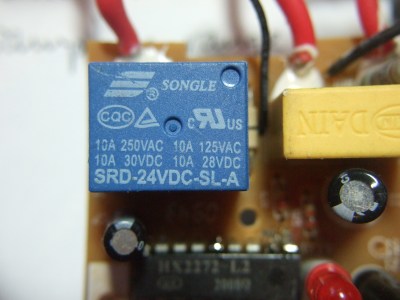 Have you ever looked on a relay and noticed that it has ratings for DC and AC use? For example, these relays are rated for 10 A at 250 V AC, but only 10 A at 30 V DC. Where does this factor of ten come from? Relay contacts can spark as the two contacts get close together, and they are prone to weld themselves together at higher DC voltages in a way that’s just not the case for AC, because AC arcs self-extinguish 100 or 120 times per second.
Have you ever looked on a relay and noticed that it has ratings for DC and AC use? For example, these relays are rated for 10 A at 250 V AC, but only 10 A at 30 V DC. Where does this factor of ten come from? Relay contacts can spark as the two contacts get close together, and they are prone to weld themselves together at higher DC voltages in a way that’s just not the case for AC, because AC arcs self-extinguish 100 or 120 times per second.
Making mechanical switches that work for your DC home electric system is going to be a problem, then, and that’s going to put downward pressure on the voltage. The average car contains a lot of relays, and they seem to function most of the time, so maybe 12 V is a good pick here. Don’t take my word for it, though. Here is an automotive engineer’s take on DC in the home. It’s a little bit dated, but he complains about the extra design concerns in working on a 24 V diesel vehicle. We take that as a vote for lower voltages.
The X factor here is progress in MOSFET or IGBT manufacture. Solid state DC circuit breakers aren’t as cheap as mechanical (AC) breakers yet, but at voltages like we’re considering inside the home, they’re getting there. The higher price may also simply reflect present lower demand. Maybe the downward voltage pressure will evaporate in the near future?
W.A.G. Time
Now we’ve come to the end of the article, so let’s see if we can make any sense of all this. If solar is going to play a role in our future energy demands, it’s inefficient to round-trip from DC to AC and back again. It’ll be more efficient to stay DC from the panel to the battery to the end device, maybe only changing voltages once or twice with highly efficient DC-DC converters along the way.
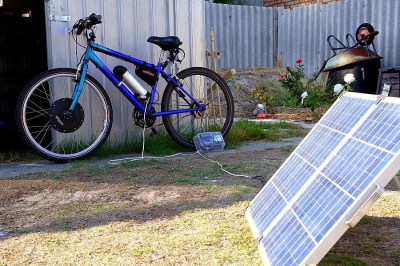 If there were to be a complementary DC standard, heating losses push the voltage level up, switching constraints push the voltage down, and safety is, we think, a wash. Solar panels are essentially costlessly configurable for either high voltage or high current, and we think it’s telling that newer installations tend to run in the 24-50 V range. That says a lot about the importance of heating losses. Batteries are similarly flexible, so there’s not much problem matching them to the source.
If there were to be a complementary DC standard, heating losses push the voltage level up, switching constraints push the voltage down, and safety is, we think, a wash. Solar panels are essentially costlessly configurable for either high voltage or high current, and we think it’s telling that newer installations tend to run in the 24-50 V range. That says a lot about the importance of heating losses. Batteries are similarly flexible, so there’s not much problem matching them to the source.
We’d be stoked to have DC sockets, and devices that plug into them, all powered by a medium-sized panel on our roof and stored in medium-sized batteries in our basement. Whether this goes from the panel to the battery to the plug at 48 V or 12 V is going to depend on the relative prices of copper and hefty FETs, but we’re betting that FETs get cheaper and copper more expensive. We’d personally like to see this relatively high voltage stepped down at the plug for safety, say to 12 V, but we won’t quibble. It would make the perfect complement to our existing AC infrastructure.
What do you say? What factors are we missing? Any of you have a DC side of your home already? What voltage(s) for DC?

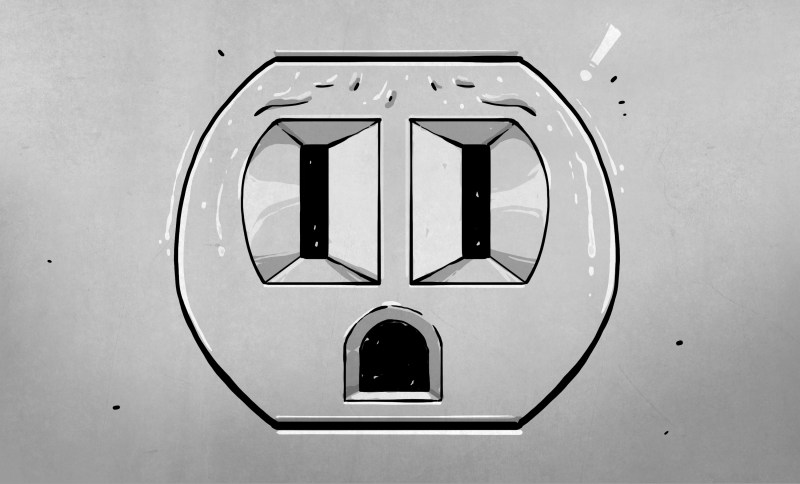














As a practical matter 24v is a standard for a fair number of off-grid dc appliances, charge controllers, power converters, etc. 42v… never heard of it and I’ve lived with off-grid solar for 15 years, installing friends systems, etc. 48v is also a standard although mostly just for charge controls, battery banks, inverters and downconverting to 12v or 24v…. 48v nominal can go up to 60v during battery equalizations so that is probably out.
Code many places requires dc wiring to be run in conduit btw.
A/C will win out in the end. I believe eventually as solar gets more efficient along with other technologies such as battery storage and fuel cells, the home will generate more power than it consumes which will have to be converted and put back on the A/C grid. The ultimate grid to share excess power generated is a massive grid and not a micro grid when more energy is produced at homes than used by homes. If government incentivized homeowners to produce power by being able to sell it back at fair market value (which utilities do not want), then this will open up the floodgates to power production by homeowners. Excess energy even if stored is more useful and economical to sell back to the grid in a just in time approach rather than large storage cost.
Last thought, power demand from electronics is increasing faster than other load types in a home and at a faster rate than electronic producers (I.e. solar) can generate. Well always find a new device to add to make our lives easier and each will require us to use more power. Once solar reaches a Moore’s law limit, that additional power will have to be produced elsewhere than homes at larger more centralized power generating stations.
And so it goes that A/C and centralized power production wins out on the long term.
both ac and dc will be available in many homes as solar energy continues to improve. led lighting can best be powered with dc, no need for conversion and all the noise and power factor lowering that is introduced in a mixed system. i will be installing a 24 volt grid in a remodel i am doing to power all the lights for starters. no electrical certification required, 1/4 the cost of copper wire to say nothing of easier to wire. intend to utilize poe ethernet for smart devices such as cameras. maybe introduce some dc;dc converters for some usb charging outlets. its a start!
Telecom -48v, tonnes of gear uses -48v and there’ll be plenty of 48v components, power supplies and converters around surplus. It’s a bit like 3-phase gear, used loads in industry but worth bobbins on the used market.
I side with Sheldon… 73 Volts.
After wading through this astounding collection of comments, and considering all the effort & expense required to create (or especially retrofit) a whole-house DC system, I conclude that it makes the most sense to just keep things as they are. No matter what voltage you select, a large number of devices are going to need DC-DC conversion anyway. Doesn’t sound much more cost-effective to me then just putting a big inverter on your DC source and keeping all your existing wall warts.
Where you normally have utility-supplied AC available it might still be worthwhile to run 12VDC from your backup supply to each room through, say, 16-18ga wire (riser rated, if you’re concerned about what an inspector might say, otherwise it could be zip cord) to power LED lightstrips in case of a power failure–that would give you a few amps at each location with tolerable losses. Instead of breakers, you could use a cheap, simple plug-in fuse at the start of each line. In each room, you could have one surface-mount junction box containing an ordinary switch. Hardwire the LED strip to that box to avoid the need for connectors. Maybe not pretty, but very cost effective.
If you want to get a little fancier, put a 12VDC-5VDC converter in each junction box that connects to a USB jack for charging small stuff.
Hmm… I think I’ll go start this right now.
It will depend on the power cable length you expect to have. If it’s a small setup with relatively moderate power, 48V does the job, and can deliver a kW with less than 30 Amps which keeps reasonable cable sections.
12V seems way too much a pain to deal with because DC breakers are simply not adapted to these voltage ranges (needs derating), and it draws way too much current for a kW.
If you want to deal with higher power appliances / longer cable length, I think a dual voltage system might do the job: 350V for power delivery and high power appliances, (it’s deliberately taken so you can synth back 240V AC). Wall sockets would embed a DC-DC converter to get back 48V for your LVDC appliances.
If forced into turning my house 12V, i.e. by greenwashing politicians thinking they can legislate physics. I’d wanna stick two of the biggest copper rods or pipes I could find down the center of the house from the apex of the roof, then solar and a few savonius rotors cobbled to car alternators could have short feeds to central bus. Fixed appliances could be rearranged to those corners of the rooms nearest the bus, and have short hookups. Low amp circuits could radiate for if you really need to use your laptop a full 20 feet away from it. Down in the basement, they could get hooked up to batteries. and if they are the type where outgassing is a problem case them over and ventilate.
i think low voltage power line should focus on the really low voltages, as many things fit in the 5v-12v range. Basically 90% of the things i have running now use my secondary 12V power line..as i installed such a thing a few years ago. I find it useful, much more useful than i expected initially. 5V is more used than 12v , but its better to get 5v out of 12 than vice-versa ..so i installed 12v line. I am using a regular led strip power source 300W and is more than enough.
And nobody mentions the effects of corrosion that DC can cause- just look at the terminals on the 12V battery of a car. AC, with it’s constantly cycling polarity, largely prevents this.
What about galvanic corrosion? We see it all the time on car batteries- because of the rapidly changing potential, we do not see this on our regular wall plugs.
Very interesting. Thanks!
Despite this enlightening blog & comments, one bit of reality v theory: full-time / snowbird campers who boondock/drycamp in their RVs/motorhomes have been living with 12volt for many, many years despite the deplorable reputation of the RV industry, including electrical wiring, and the reality is NOT that RV/motorhomes are burning to the ground, or campers dropping like dead flies, or a shortage of 12volt appliances, or any of the hysteria that I’m reading here.
I’ve been following a couple full-timers who, on average, have been living in their 12volt worlds for more than a decade, and the biggest electrical limitations are:
a) A/C
b) microwave
Neither of those are required. For all the comments about large AC appliances being a blocker, the RV industry solved many of the energy-sucking appliances because: fridge runs on LP, range/oven on LP, heat on LP, etc. Like others noted, LED lights and many 12 volt DC appliances solve the rest of the equation for these folks. (12 volt appliances?? Walk into any truck stop and check out just some of the products: TVs, coffee makers, fans, etc.) Half our world doesn’t even have A/C, though full-time / snowbird campers avoid the appliance entirely by moving their home to a cooler place — a luxury traditional residents of homes don’t have. And microwave is a luxury that the stovetop can almost always stand in for.
You may not consider an RV/motorhome to be a “home”, and it isn’t representative of housing in general, but it is a reality instead of a theory. It can be done. (A RV/motorhome takes less wiring than a McMansion, of course, but a 40′ x 8′ Class A RV has more floorspace than some tiny homes wired for AC!) Elliot’s blog and the comments are very enlightening and detailed but the criticism for living in a home running on low volt DC smells like a bunch of FUD (Fear Uncertainty and Doubt) based on theory instead of reality.
There will be several Direct Current Vollages in the home! 380Vdc for large loads (HVAC, Washers/ Dryers, EV charging, large motors) and generation sources (EV’s, battery storage, PV, wind, micro hydro, & from grid tied systems). General branch circuits (lighting, plug loads, etc) will likely be 48Vdc and/ or 24Vdc. 48Vdc will likely be only up to the receptacle for plug loads, a smart receptacle will provide lower voltages as requested by the device.
DC mirogrids are being used today in commercial applications and standards are being set today, 2017, for homes based on the commercial systems.
Refer to: http://www.emergealliance.org
Spend sometime in their resource section of their website for addition information.
Now for those that say it’s a pipe dream and not in our lifetime; well I hope you plan on living more than 7 to 10 years from today 9 Sept 2017.
You don’t think so?
Check out this from Tony Seba: https://youtu.be/2b3ttqYDwF0
Erik Lundquist; P.E.
By the way the 2017 NFPA 70 National Electrical Code has sections for D.C. Microgrids and low voltage systems.
Motor Loads: rare earth permanent magnet motors.
Look at all the cordless motors we have in the world today, cordless power tools, cordless vacuums. Not powerful enough? How about the Tesla Model 3 for an example.
By the way most control systems for the D.C. Home willl not be based on your typical wall switches. Think more along the lines of Smart Home or Home Automation where the controller (swich) will be integrated into the load. No need for the extra wiring to/ from the controlling device e.g. switch. Plus devices can be included into groups/scenes to be controlled as one unit with software that is infantry more versatile than switched circuits.
Additional information that maybe interesting:
http://aceee.org/files/proceedings/2016/data/papers/10_780.pdf
http://www.innoenergy.com/wp-content/uploads/2016/03/RREB7_DCnetworks_Final.pdf
http://www.adcenergy.org
Erik Lundquist, P.E.
Atleast in the near future, I’d go with a duel voltage system.
Leave the big power items on AC, but seporate the lights and other “low” demand to 12v DC or less. Most newer homes have the lighting on seporate circuits already, atleast in the U.S. Just hook those to low voltage and add LEDs.
LEDs would not need the added transformer circuits, and thus be even cheaper, use less energy that there AC counterparts and more dependable.
In my opinion this is nonsense because from AC 3-phase it is possible to easily get DC line by using simple diode rectifier. For the opposite side you need power supply far more complicated or bigger than simple rectifier.
One more thing i would add is about power consumption your statement is such common devices use low voltage…Today modern PC is low voltage based device powered by 1 KW amount of power just imagine currents at 50 V or similar through long walls…
I think 380VDC is the right answer. This allows you to run non-AC required 208VAC loads on the DC bus. We can get most loads operating at 190VDC to ground, and for higher current loads (or just the whole house if you want) you can run a positive and negative charged cable for connections. Standard insulation protects at this voltage too. The only real worry is short circuits and that’s why we have breakers.
I feel like 110vdc is a good balance for safety and efficiency. Most modern appliances have a switch mode power supply , which will happily operate on AC and DC ( no inverter needed) . I have tested this with a battery bank, phone chargers , laptop chargers , LCD/led TVs all work fine! And because devices can work in different countries the voltage can very from 100-240v! Most led light bulbs (but not all) Will work just fine! Some new fridges and washing machines have inverter driven motors built in , so effectively run on DC inside the device!
I saw a company promoting 48V DC lighting – ATXled.com at the 2020 National Home Builders Show. Pretty impressive operation/management. Anyone else familiar with ATXled or other companies with 48V DC lighting systems?
Home assistant is a very popular open source home control system
More and more appliances are native DC; the light-weight plug-in wall (wart) transformers are so-called switched supplies that will run on 120 VDC. I’ve experimented with 120-volt compact florescent lamps & LED lamps on DC, and they worked. I have an old Toastmaster toaster that’s rated AC/DC.
Solar batteries (solar photovoltaic panels) being DC generators, ought to be connected so as to provide 120 volts or 240 volts to charge batteries to use that DC power whenever the sun’s not shining. The issue of concern to me is receptacles–and particularly, switches & circuit breakers. Anyone who has seen a trolley or trackless trolley draw power whilst traversing a section insulator–or a subway/el train drawing power whilst traversing gaps in the third rail will know what I’m talking about. While most trolleys & subway/el trains run on 550 to 750 VDC, DC at a 2 ampere & higher current draw at 120 or 240 volts will still draw an arc that will amaze you, and junction boxes, circuit breakers, switches and receptacles must be certified to deal with 120 or 240 VDC power safely.
The usual switches & circuit breakers for household use are designed & rated for interrupting AC only; using them to interrupt 120 or 240- VDC–esp. loads drawing more than 1 or 2 amperes let alone a short circuit will result in the destruction of the circuit breaker or switch from arcing–and a serious fire hazard–so circuit breakers & switches MUST be rated for DC at 120 & 240 volts. (The old push-button & toggle switches that make clearly audible snapping noises were designed to interrupt DC because DC power persisted into the first third of the 20th Century.) Receptacles: People will inevitably unplug appliances, lamps, and other devices when they’re operating, so DC receptacles will have to be able to handle that sort of thing.
Of course, DC receptacles will have to be configured differently from AC receptacles to prevent plugging AC-only devices into them. What won’t be practical is DC voltages less than 120 volts, as it seems asinine to be unable to use the DC power generated by your solar battery for appliances & devices that will run on DC. It must be understood that inverters & batteries incur power losses during inversion, charging & discharging, respectively, so eliminating the inverter for in-home power use will eliminate the loss atop charging & discharging–although it should be possible to use power fresh from the solar battery as long as the sun is shining, thus using the power most efficiently.
Relay insulation ratings for dc are lower because that’s simply wht they test it for because they don’t expect it to be used with 250vdc. Dc line can carry 41% more power simply because current is constantly at max while in ac line it’s rms of the max rating. And NO, the arc does not self-eliminate itself 100/120 times a second, the time is too short for the air to de-ionize and drop in resistance
Several military platforms have gone to a high voltage DC, say over 270 VDC…
But require vacuum circuit breakers and switches to safely interrupt a fault…
Especially with the high voltage at high altitude…
Think about +62.5 and -62.5 to ground for 125 VDC house circuits…
Voltage to ground from either leg is now only 62.5 volts…
A little safer for battery maintenance…
Wire using black (-62.5V) and red (+62.5V) red wire..
Green or green/yellow wire for safety ground..
No white neutral wire… (USA color code)
Use double pole circuit breakers rated for 277 VAC, to get the margin needed to break a DC load..
Use double pole light switches rated for 277 VAC to break each side too..
Thinking having seen multiple breakers and relays rated 125 VAC / 50 VDC,
277 VAC rated devices should handle well over 50 VDC..
LED lighting will run on the 125VDC..
Four (screw) terminal three way light switches (which transpose the leads) the will allow multiple entrances to a room, if a diode is added to each load so it will operate on only one polarity..
Has to be wired a little different, with the +/- pair going through all switches before the load..
Can’t use a single wire “traveler” and SPDT switches at the ends..
Most electronics rated 100-240 VAC should run on 125 VDC…
(The only exception is older electronics with a 120//240 VAC selector switch…
They use a voltage double on 120 VAC and a bridge rectifier on 240 VAC,
hence need AC for the lower input voltage….)
And definitely will run on 140 VDC (100VAC times the square root of 2) for the rectified peak voltage…
100 VAC is the Japanese standard, but I don’t know what low line voltage they design for…
Inverter refrigerators and washing machines will also run on DC..
The remaining devices with induction motors can have local inverters, that power up with the motor..
Ten 12 volt lead acid batteries gets you to over 140 VDC under charge…
Or 100 large 1.4 volt Ni-Fe or Ni-Cad cells…
Either starts pushing the 62.5 VDC above 70 volts..
Keeping voltages below the old telephone line “48 VDC” may sneak under a standard,
but may be too low for the load requirements..
Biggest problem is that it will be impossible to sell this to the local electrical inspector..
My home in Senegal is all DC: 12V and 24V. I cook with gas. I previously had a 48V/15k/BTU air conditioner unit however I recently replaced it with 2 x 24V/12k/BTU units. BLDC motors and DC compressors for refrigerators, freezers. and air conditioners have evolved considerably over the past 15 years and more importantly have become affordable. Concerning the DC plug and wall socket, I use the Planet Plug which cleverly combines the existing round European prong and the flat American prong to respect polarity. This greatly facilitates things for existing plug and socket manufacturers. This also avoids dependance of the integrity of the wall face plate. dc@lapriseafricaine.com